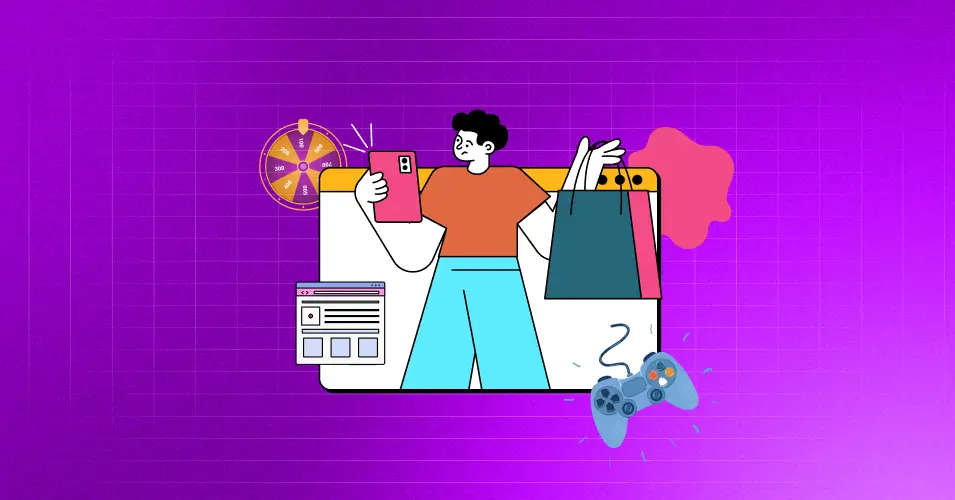
Ecommerce Gamification Explained: Why It Works + 10 Real Examples from Top Brands
SHARE :



You are buried in deep thoughts, wondering what’s wrong with your eCommerce store.
Everything looks fine from your end—it is well-designed and properly SEO-optimized. All your product pages have high-quality pictures and clear descriptions.
Traffic is good, too. However, visitors are dropping at some points, and sales are not meeting your expectations.
If you are a business owner who is stuck in this loop, we can help you identify the missing element.
It’s gamification!
Our love for games actually goes back thousands of years. It satisfies our psychological desires for adventure, exploration, and achievements.
Brands can use this basic human nature in their favour. Gamification in sales creates a fun and engaging online shopping experience, ensuring better customer retention.
In this article, we’ll discuss gamification in detail. We will also explore some gamification techniques and how big brands are using them.
So, let the game begin.
What is gamification in eCommerce?
Ecommerce gamification is a form of eCommerce marketing strategy where brands create a fun, interactive, and exciting shopping experience using game-like elements.
Retail games for customers are designed to trigger basic human psychology for accomplishment. Here, shoppers feel like they are winning a prize rather than buying a product.
This strategy encourages visitors to stay longer on your website, explore your products, and engage more deeply with your brand. Ultimately, leading them to make a purchase from you.
Pro Tips: Explore the top and proven strategies to increase eCommerce sales for businesses with minimal effort.
Common retail games for customers
It’s true that eCommerce gamification sounds a bit overwhelming. You might be thinking about what game you should build and how much it might cost. However, in reality, you don’t need something grand to get started.
Let’s see some simple sales gamification ideas used by eCommerce brands that will let you earn more profits with minimum development cost:
- Spin-to-win: You might already have seen it many times as a lucky wheel. Here, shoppers spin a virtual wheel to earn incentives like discounts or free shipping, depending on where the wheel stops.
- Loyalty programs: In loyalty programs, you usually reward customers with points for actions like completing a purchase, referring a friend, or sharing your products on social media. Users can later redeem these points for free shipping or discounts on their next purchase.
- Scavenger hunts: Like a treasure hunt, customers look for hidden codes or coupons on your website. These codes/coupons might offer discounts at checkout or points that can be redeemed later.
- Limited-time offers: One of the most effective FOMO marketing examples is using limited-time offers. The feeling that time is running out triggers a sense of urgency and influences us to make purchase decisions faster.
- Social media contests: Sharing media contests are a classic example of gamification. Here, users can share photos with special hashtags. Posts with the most likes/comments win special prizes. It’s a great way to produce user-generated content and let your customers market products on your behalf.
- Progress bar: You can use a progress bar to encourage customers by visualizing their goal. One common example is using free shipping progress bars. Shoppers will naturally feel motivated if they can see how close they are to earning their prize.
- Bundle offers: Allowing customers to customize bundles of products is a great way to grab their attention. If special rewards, such as free shipping, are offered for bundles, shoppers will likely buy more than their initial plan.
- Quizzes: Customers usually participate in quizzes to earn rewards or get personalized recommendations. Using trivia-style quizzes not only engages customers but also provides valuable insights along the way.
- Virtual try-ons: Augmented reality (AR) features like Google AR Try-ons let customers visualize products before purchase. This bridges the gap between online and physical shopping and inspires customers to make purchase decisions faster.
Benefits of the gamification of eCommerce
“Gamification is simply a reflection of our innate desire as humans to be recognised,” says Dave McDermott, Director of Sales Enablement, Kelly Services. We agree with him wholeheartedly.
The true benefit of gamification in retail lies in acknowledging your customers’ deep human desires. This sense of recognition motivates them to buy from you and return for more in the future.
From new sign-ups and purchases to customer retention, the range of sales gamification benefits is extensive.
In this section, we will discuss the most prominent benefits of gamification in e-commerce.
1. Increase sales and revenues for the brands
Gamification and sales are tightly knotted entities. Website gamification is designed to hook visitors and make them purchase strategically and in a fun way. It encourages referrals, boosts order value, and positively impacts revenues.
eBay’s bidding system can be a good example. They will not make you feel like you’ve purchased something. Rather, you’ll feel like winning in bidding against the competitors. The prices you paid might be 10% higher than the actual price. But you’ve won it and it feels rewarding.

2. Improve customer engagement and loyalty
The best part about gamified websites is that shopping is a game. It lets customers stay for a long time, have fun, and they usually buy something at the end as part of the experience. When your business becomes an enjoyable experience, customers will not easily forget you and are more likely to come back.
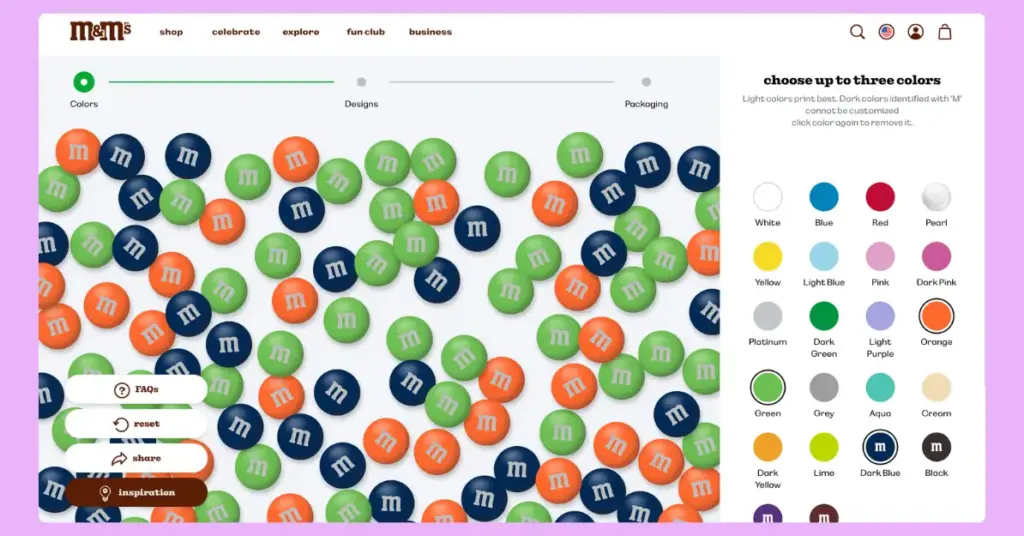
The famous chocolate brand M&M introduced customizing the colors and packaging of its chocolates. This strategy was simple, but the result was outstanding.
People started trying different combinations following different events in their lives. The order amount increased significantly, resulting in a 100% rise in profit margin for the company in 2023.
3. Provides a better shopping experience
Retail gamification helps businesses stand out by providing an unforgettable shopping experience for customers.
Suppose you are browsing a website. They ask you to open an account and then offer to play a game. You win, climb up the leaderboard, and end up buying something with satisfaction.
Sleek and unforgettable, right?
The Build-A-Bear Bonus Club is an ideal example of gamification in business. Here, customers earn one point against every dollar spent and get a $10 reward for every 100 points.
Following this structure, customers continued to spend, and the company earned $496.4 million in annual revenue in 2024, more than double its revenue in 2020.

4. Improve brand image
E-commerce gamification can be a good strategy to improve brand image. Businesses can showcase their commitment to different social causes and attract socially aware customers.
The Forest app can be one of the best examples of eCommerce gamification using social contributions as a unique selling point.
This productivity app allows users to earn virtual coins by reducing their mobile phone usage. Users can use these coins to plant trees. It also offers a personality test to help users identify their focus types and plant the trees they love.
Currently, Forrest has more than two million paid subscribers who believe that they are paying their debt to nature as well.
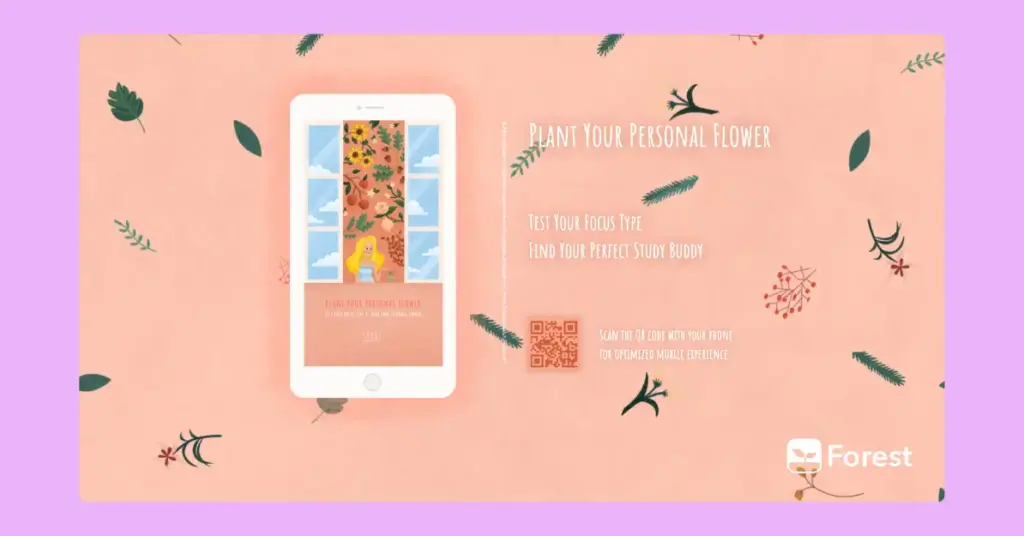
5. Help to gain genuine customer insights
Gamification websites provide creative ways to gain valuable customer insights like their names, emails, preferences, interests, and hobbies. Brands can use this data to segment their audience, launch personalized marketing campaigns, and achieve better conversions.
Take Casper as an example. The furniture and home decor brand uses a trivia-style quiz to turn mattress shopping into an interactive and self-exploring experience. They will ask many questions about you as you move forward to finding your ideal mattress.

Get exclusive social media marketing tips and tutorials in your inbox!
Meanwhile, the brand will continue to learn more about you behind the scenes. By launching personalized marketing campaigns with collected data, Casper earned $343 million in revenue last year.
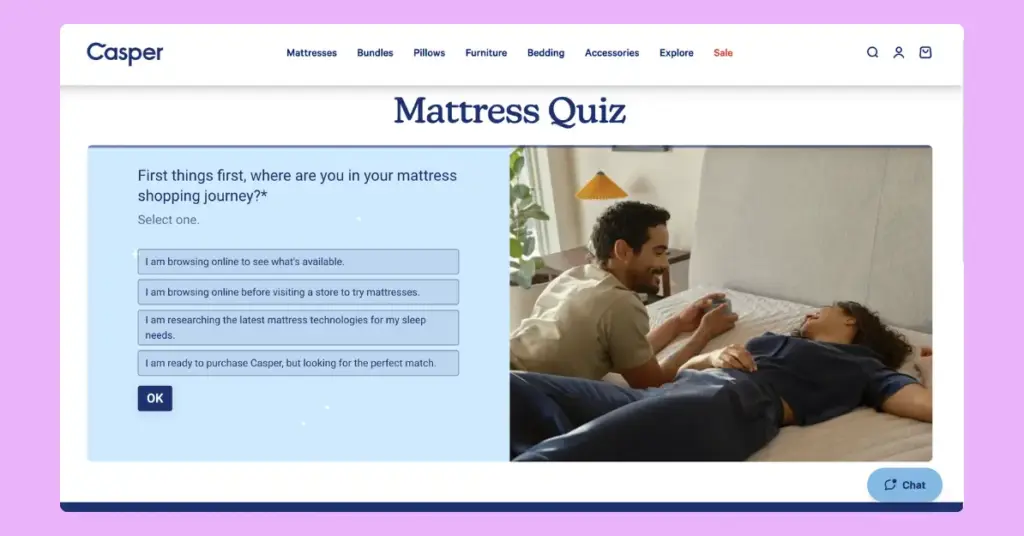
6. Reduce cart abandonment rate
We all have moments when impulses take over and we add products to our carts. But our senses come back quickly, and we forget what we added, and the added products become abandoned in our carts. Your customers are no different.
However, eCommerce gamification can be the light at the end of the tunnel for abandoned carts. Simple gamification, like adding a progress bar and offering discounts for completing the purchase, will do the job.
German pet care brand Mammaly uses a gamified progress bar to suggest customized supplement requirements for pets. You will feel special as they ask for details about the pet you love so much, and eventually, you will be on the checkout page without noticing.
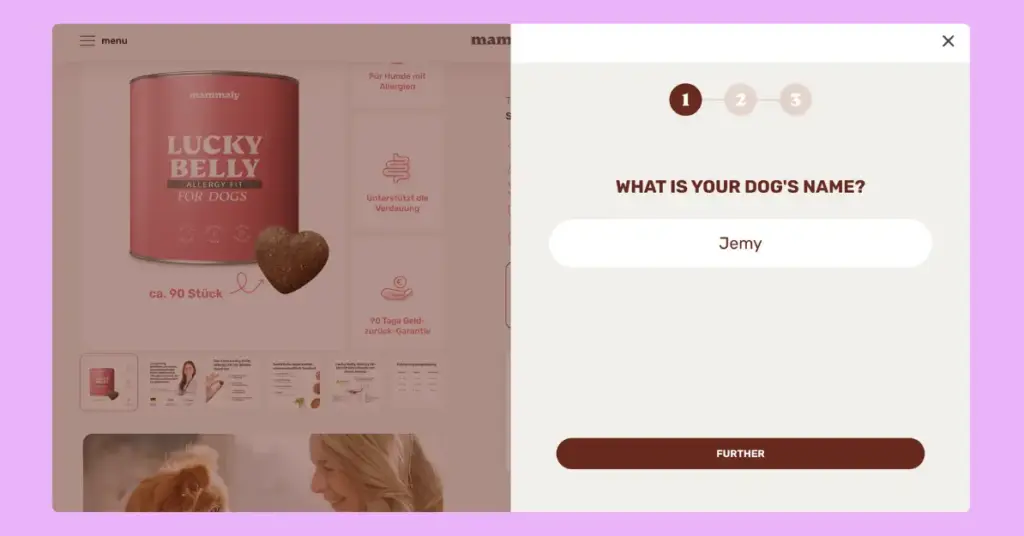
7. Enhance average order value
Average order value, or AOV, refers to the amount spent by each customer per transaction. It’s a key signal that your business is growing in the right direction. Now, let’s understand how a gamified website can help you there.
Gamification involves different mechanisms, such as loyalty points, rewards, challenges, badges, and leaderboards. Earning them feels like touching a milestone. When the audience feels like they are “earning” rather than “buying,” they will naturally be motivated to spend more.
Plus, loyal customers are likely to make referrals and connect you to other prospects. Such actions lower customer acquisition costs and widen your profit margins.
Top 10 eCommerce gamification examples from top brands
Gamification in eCommerce is no longer just a theory or hypothesis. It’s a globally accepted marketing strategy now. To prove our claim, we started researching how different businesses worldwide are using gamification for their benefit.
After burning the midnight oil, we have finally prepared a list of gamification eCommerce examples from renowned brands for your inspiration.
In this section, we will discuss them with you. So, get ready to feel motivated.
1. KFC Shrimp Attack
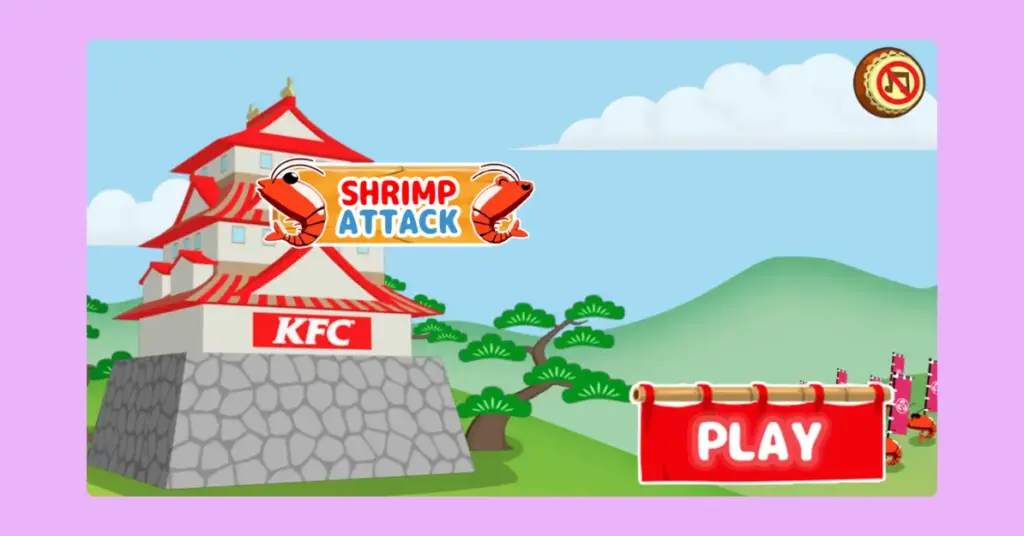
KFC Japan launched the Shrimp Attack game as a marketing campaign back in 2020. In this game, you had to protect the chicken castle by slashing the Ebi Shrimps that appeared at the bottom. High scorers would get vouchers in return for protecting the castle, which could be redeemed.
Nearly 854,454 players participated in the game, and 22% of them redeemed vouchers in the outlets. KFC struggled to keep up with the high demand, and it had to stop the game to control the crowd. The store saw an impressive 106% rise in sales after the game was closed.
2. Starbucks Rewards
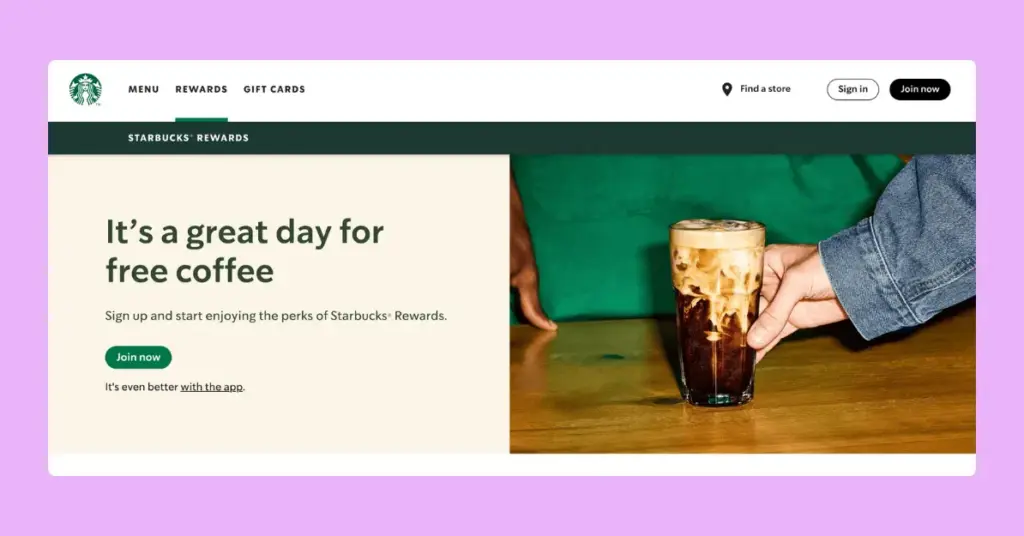
Starbucks Rewards is a prime example of gamification in improving brand loyalty and customer retention. The brand offers a reward system where customers earn stars whenever they purchase something. Later, the stars can be redeemed at any outlet.
You can redeem 25 stars for a free drink, 200 for handcrafted coffees, or a morning breakfast. The higher star points will earn more expensive items. Rewarded customers are reportedly to contribute to 50% of their sales and demonstrate the power of loyalty.
3. Bubble Skincare Quiz
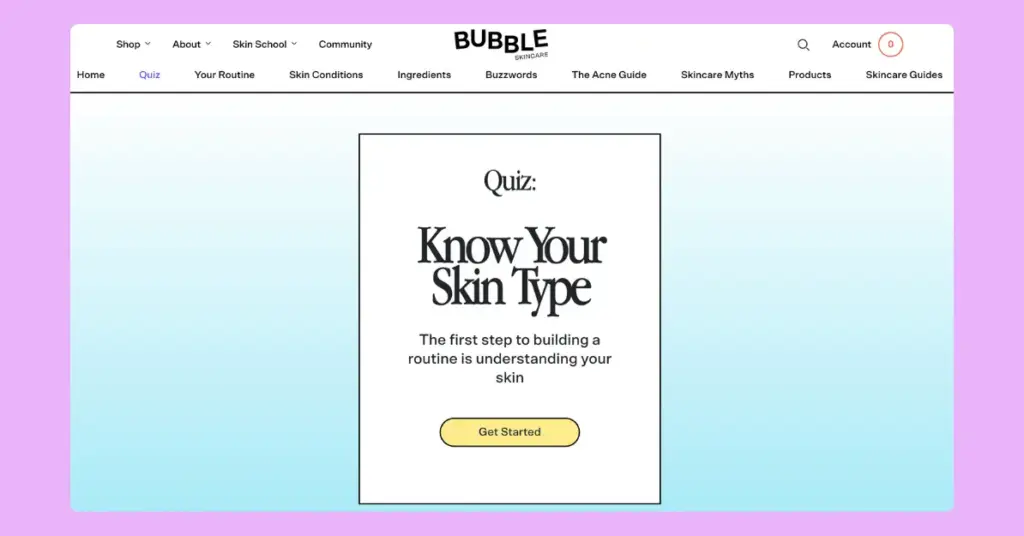
The Bubble Skincare Quiz is another ideal example of marketing gamification. The company designed the questions to help new users find their skin types and the most suitable product. This simple strategy makes users feel understood through personalized recommendations and inspires them to shop.
In return, the brand learns valuable information about customers to develop new products or adjust the supply chain. What’s most impressive is that the brand retains 89% of its customers using its trademark personal touch.
4. Gucci Town
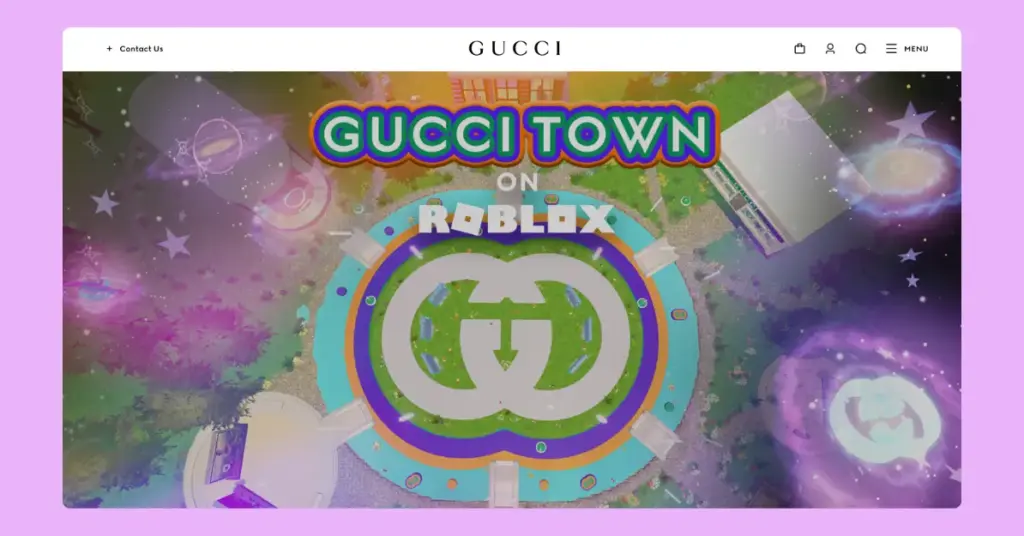
Gucci Town is a virtual community hub. Here, users can explore the brand, its products, and other members. The metaverse also offers virtual currency that can be used to buy virtual Gucci products and connect with other fashion enthusiasts.
The game received 45 million visits over time and redefined the accessibility of luxury products to the general public. Brands can utilize this type of metaverse to create and engage inclusive communities where every opinion is valued and matters.
5. KENZO Shopping League

The luxury fashion house, KENZO, launched the Shopping League to promote its limited-time sneaker. It launched an online game where the players had to wait in a virtual queue to enter the online shop. Once inside, they had to fight with one another for their right to purchase.
To make things more competitive, the number of players was greater than the number of shoes, and they could snatch from one another before checkout. The whole environment successfully created the urge to win, and all 100 shoes were sold out within 12 hours.
6. Duolingo Adventures
Examples of gamification will always be incomplete without Duolingo. Badges, leaderboards, XP, badges, coins– everything about this educational platform is gamified and delightful. Here, learning is a game where users interact with Duolingo characters to move forward.
Considering the popularity of its characters, Duolingo launched the game Adventures, in which users play the role of the characters to complete certain tasks, like ordering coffee. More than 20% of the reviewers say that they use the platforms repeatedly for gamification and a fun learning experience.
7. LEGO Playground
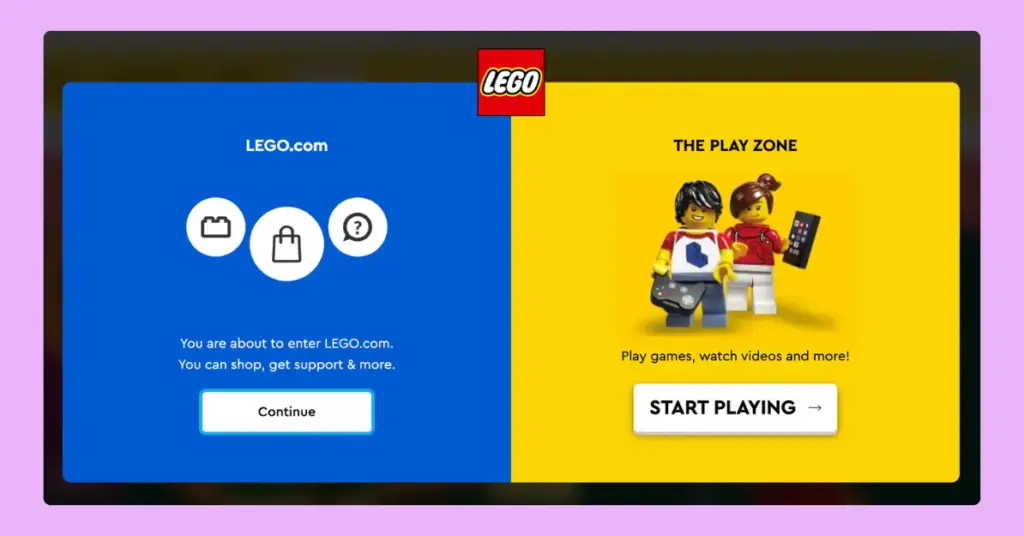
LEGO Playground offers different scenarios and game elements. You can participate in different activities and challenges with your custom avatar and collect points.
It gives you the feeling of participating in a community event. You are having fun and connecting with people who love LEGO. The brand’s creative approach to engaging customers has eventually led to 14% annual revenue growth.
8. L’Occitane Seeds of Dreams
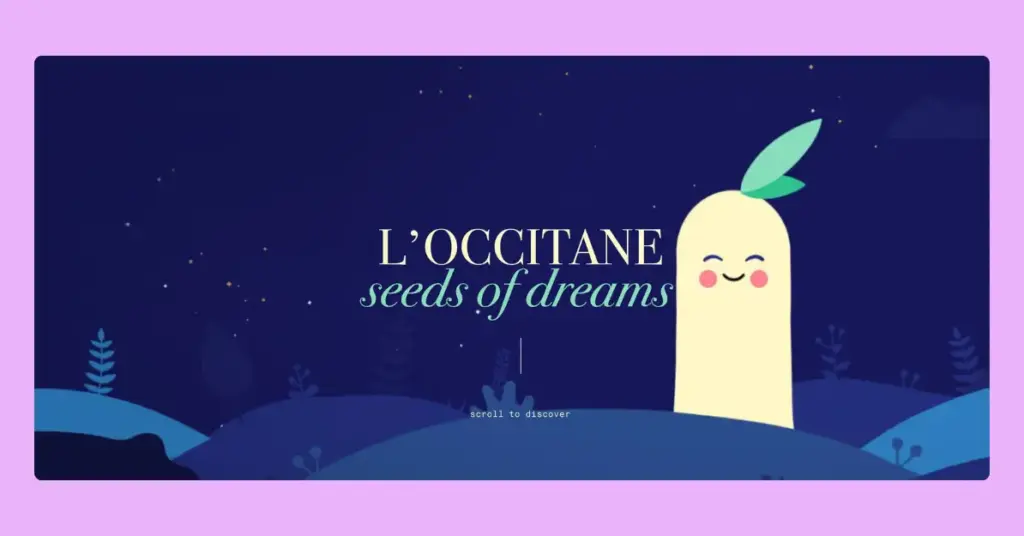
L’Occitane promoted its sustainability and green living mission brilliantly with a gamified approach. In this game, you have to grow your Seeds of Dreams with water, sun, and care. You’ll have to earn sun and water by playing mini games.
The charming interface, easy manoeuvres, and fun experience with rewards can easily engage any user and promote their motto at the same time. As a result, the company is currently experiencing a 24.1% revenue growth at a constant rate.
9. LACOSTE Crocodile Hunt
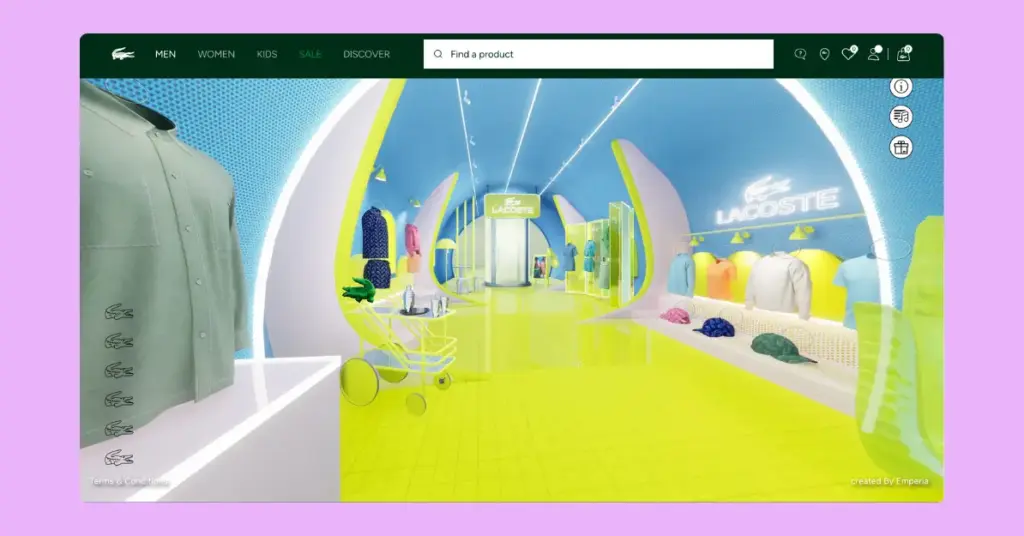
The Crocodile Hunt of LACOSTE takes place in a virtual shopping store that blends a scavenger hunt with a metaverse experience. In this game, players have to find hidden crocodiles to win discount vouchers.
The brand is one of the best gamify examples of how big companies can create diverse communities and provide a better shopping experience to everyone. Therefore, 67% of their customers are reported to remain loyal to them.
10. Temu Fishland
Gamification in eCommerce examples can not be completed without Temu. In its Fishland game, you have to earn fish food and feed it till it’s 100% full. You will be guided through different in-app activities to earn food. As you progress through the game, you’ll earn various rewards like discounts or free items.
With strong referral programs and gamification, Temu earned a 17% market share in the discount store category in the US. The brand has a strong awareness of 86% and achieved a 62.08% YoY increase in AOV. Temu knows its games!
Best gamification platforms for eCommerce
There are some situations when we know what to do but don’t know how to. You know how gamification will literally be your sales magnet, but how will you make it for your business?
The answer is gamification vendors! Many eCommerce gamification platforms will help you build games easily, saving you time, development costs, and energy.
But you might have a hard time researching a bunch of tools. No worries. We will help.
Let’s look at the list of the best gamification platforms and choose which one would be of help to you.
Platforms | Types of gamification | Pricing |
Triggerbee |
| 14-day free trials. Pricing starts from 39 EUR per month. |
Drimify |
| 14-day free trials. Pricing starts from 75 EUR per month. |
Antavo |
| Custom pricing for each business. |
WP Social Ninja |
| Free version available. Pro versions start from 44 USD per year (after discount). |
Synerise |
| Custom pricing. |
OptiMonk |
| Free version available. Pro versions start from 29 USD per month. |
Justuno |
| Free version available. Pro versions start from 39 USD per month. |
Adact |
| Custom pricing. |
Yotpo |
| Custom pricing depending on the services you want to purchase. |
Gametize |
| Free plan available. Pro versions start from 50 USD per month. |
Sleeknote |
| 14-day free trials. Pricing starts from 62 EUR per month. |
Gamified shopping is the new standard
Ecommerce gamification is not a fancy experiment for big brands anymore. It’s an established marketing strategy that needs to be adopted by businesses of all scales in the upcoming times.
Grabbing the attention of customers and making sales is now harder than ever.
With competitions getting tougher, gamification can make your eCommerce business more breathable and attractive to your customers.
That’s why we’ve covered all the basics of eCommerce gamification for you. We discussed its perks, use cases, and popular gamification platforms so that you can start strong.
Now, it’s time for you to make your move and step into the wonderland of eCommerce gamification. Cheers.
FAQs for gamification eCommerce
What are the four levels of gamification?
Four levels of gamification are discovery, onboarding, scaffolding, and endgame. At the discovery level, users are attracted, and onboarding navigates them toward tasks. The scaffolding level sustains the excitement, and the endgame level retains players with higher rewards.
Does gamification increase sales?
Of course it does. The primary purpose of using gamification in eCommerce is to hook an audience and guide them interactively towards conversion.
What role does gamification play in enhancing the overall shopping experience?
People love playing games for the excitement of reaching milestones. When eCommerce brands integrate gamification in their sales funnel, shopping becomes a winning quest. When shoppers feel like they are earning it, not buying, it naturally improves their experience.
Should I use gamification only for my younger audience?
Gamification is universal. Though young people might be familiar with sleek gaming interfaces, carefully choosing game types will include people from every generation.
Mashfik Upal Aumy
Aumy is a veteran Digital Marketer at WP Social Ninja, specializing in the WordPress industry. With almost two years of experience, Aumy crafts content that breaks down complex branding theories, product marketing campaigns, and social media tactics in a digestible manner for businesses. While not working, you’ll find him reading books, watching movies, or exploring new places on a bike.

Subscribe To Get
Weekly Email Newsletter
Connect, Customize, and Display Social Feeds, Reviews, and Chat widgets
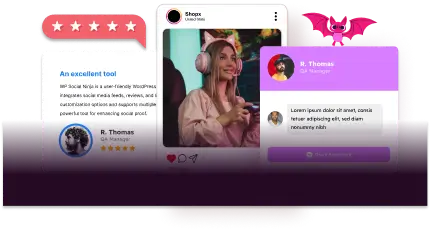



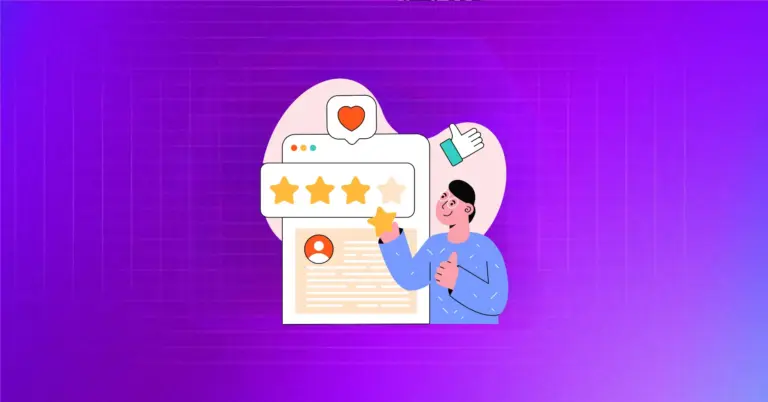

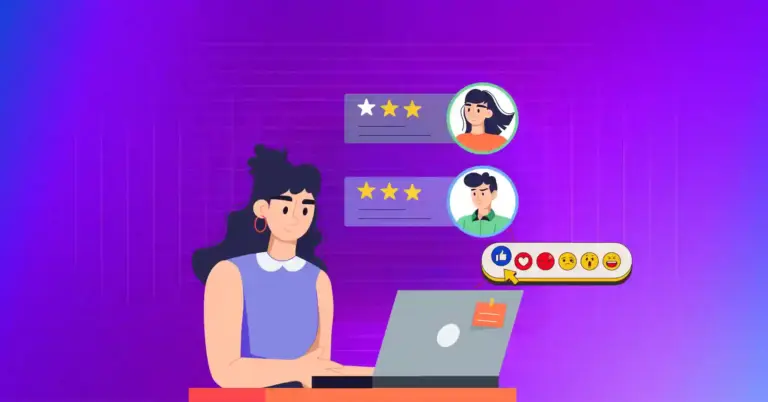
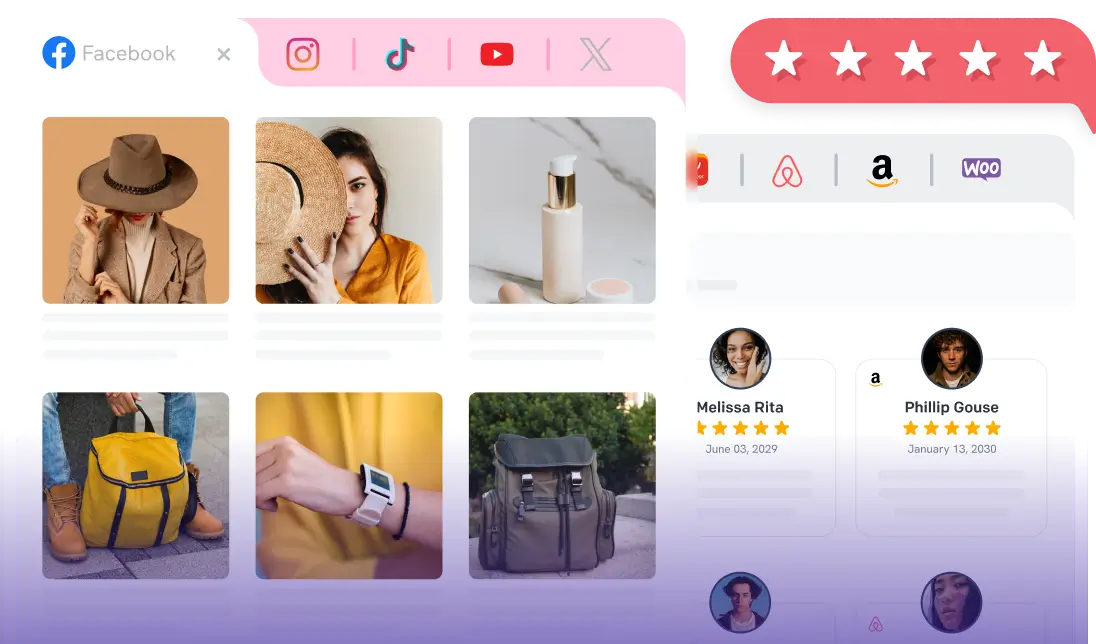








Leave a Reply